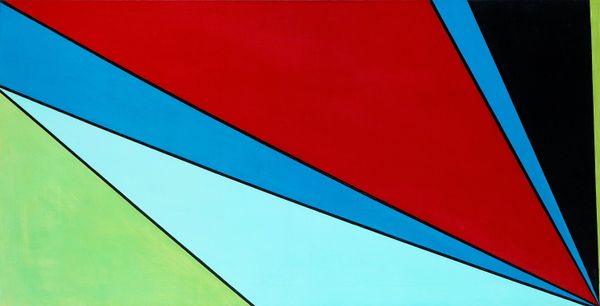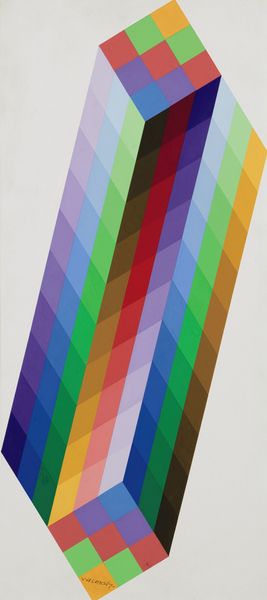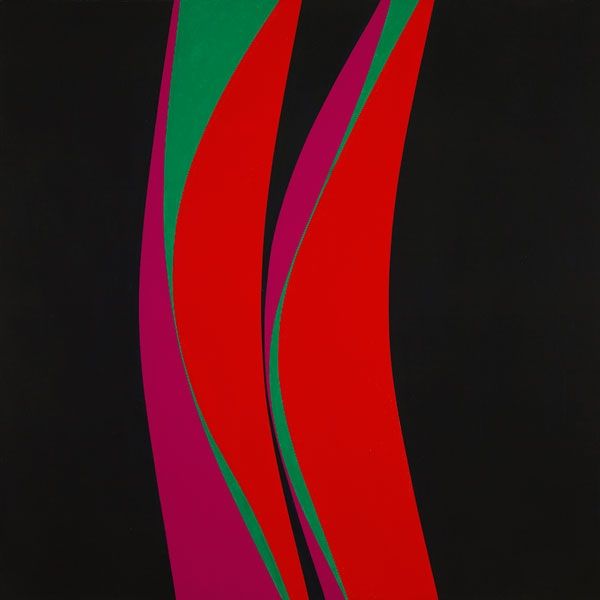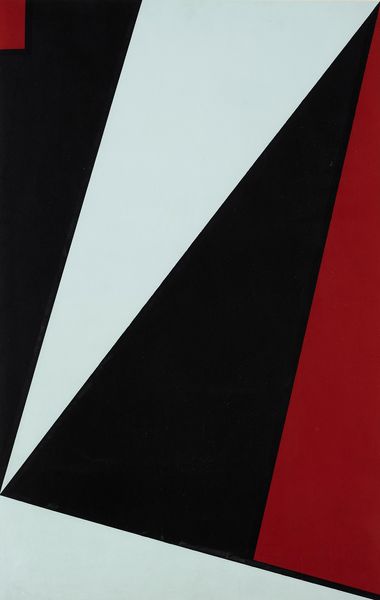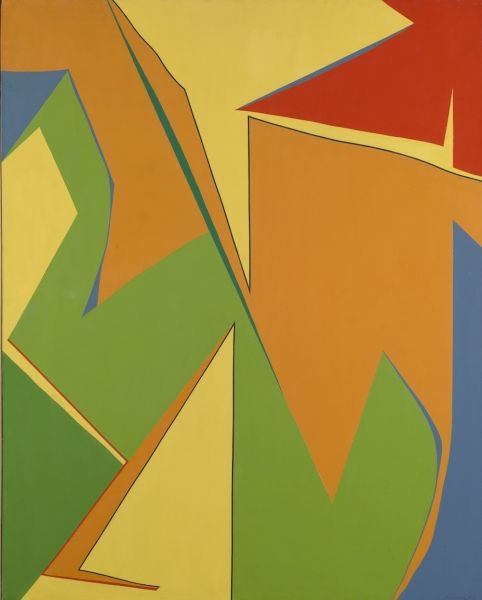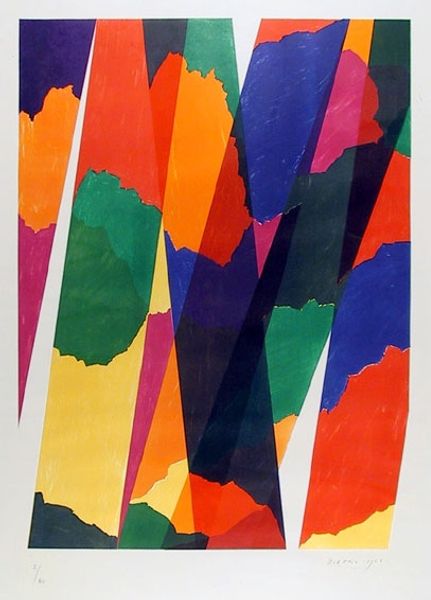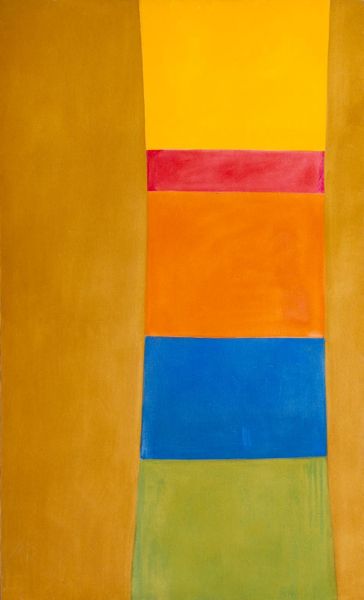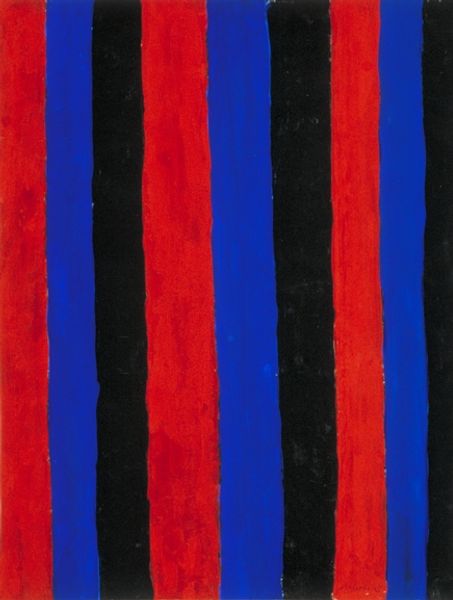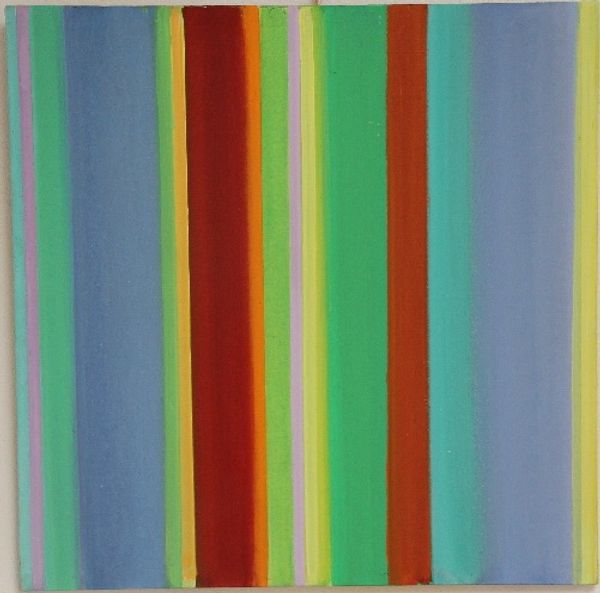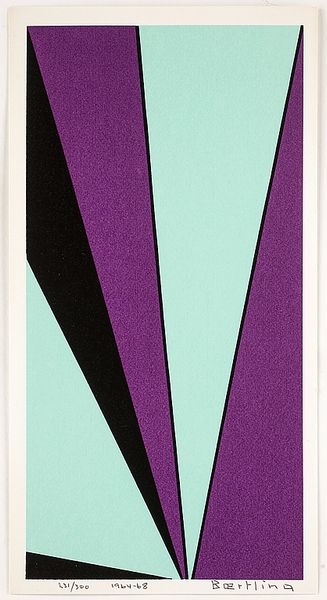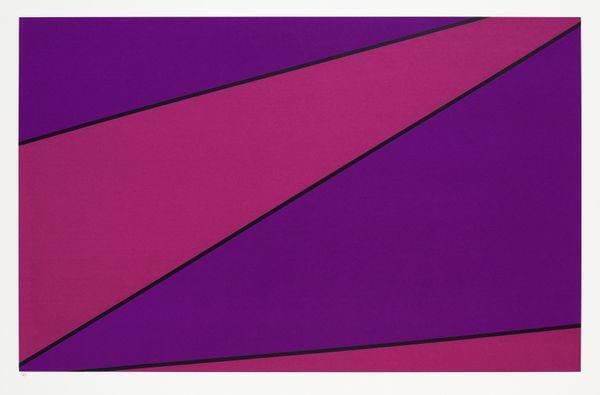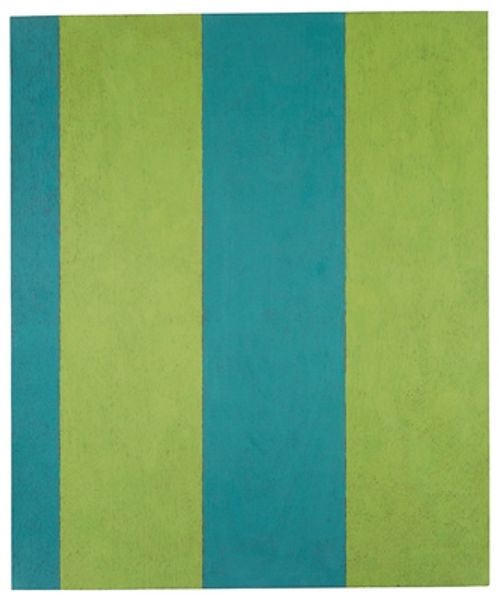
#
abstract-expressionism
#
pop art
#
colour-field-painting
#
geometric
#
abstraction
#
line
#
hard-edge-painting
Copyright: Olle Baertling,Fair Use
Editor: We’re looking at “Iras,” painted in 1959 by Olle Baertling. It's a vibrant canvas filled with these bold, sharply defined geometric shapes. The colors are so intense! It almost feels like an explosion of energy. How do you interpret this work, thinking about its place in art history? Curator: Well, it's impossible to consider a work like this outside the context of the Cold War and the broader cultural landscape of the 1950s. What do these sharp lines and intensely saturated colors evoke for you in that historical moment? Editor: I guess a sense of optimism, maybe? Like a bold declaration of progress. But there's also something… clinical about it, a lack of the artist's hand, somehow detached from reality. Curator: Precisely! This detachment is key. It reflects a desire, prevalent then, to create a universal visual language, free from the baggage of representation and accessible across cultures. The "hard-edge painting" style was very deliberate. These artists often aimed to remove any trace of personal expression, focusing instead on pure color and form. But that begs the question: Can art ever truly be apolitical, especially in times of tension? Editor: That's a good question. Even in its attempt to be objective and universal, isn't it still making a statement about the world? Maybe a statement *against* the chaos and anxiety of the time, in favour of order and reason? Curator: Exactly. And consider where this kind of work was displayed – in corporate lobbies, government buildings. It wasn’t just about aesthetics; it was about projecting an image of progress, control, and stability. Editor: So, it’s not just abstract art; it’s a symbol of its time, intentionally or not. I’ll never look at it the same way. Curator: Understanding that interplay between art and the social-political sphere is so crucial, isn’t it? It encourages us to ask whose vision of progress is being represented and at whose expense?
Comments
No comments
Be the first to comment and join the conversation on the ultimate creative platform.
